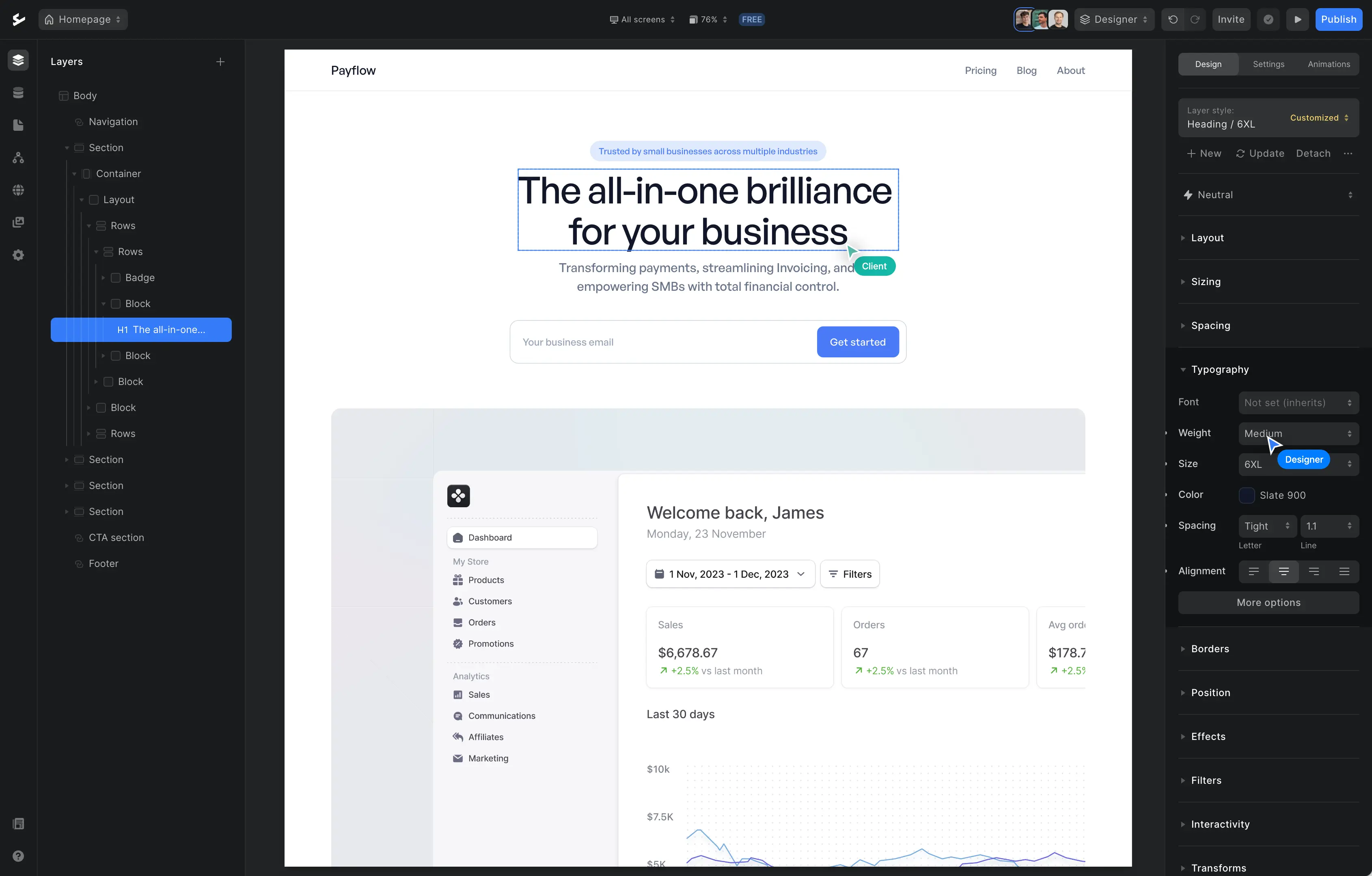The 5 features rated most important for no-code tools (according to the people)


With so many no-code features available, what do people look for most in their no-code builder?
You don’t have to guess, because we found the answer! A few weeks ago, we sent out a survey where we asked people to rate different no-code features based on their importance.
Today, we’ll reveal the top five features that were rated as most important by 150 no-coders.
1. Built-in user authentication
It’s no wonder this feature was crowned the most important of all! User authentication shows up in many different types of web projects—from communities to membership portals and online course platforms. If you’re looking to engage or build community, this is your feature.
With authentication, you can create signup and login pages to give people access to hidden parts of a web project. Typically, it also includes pages to reset and confirm new passwords.
You can set up user authentication in most no-code tools through third-party tools, though this approach can often be complex and even a little risky (security-wise). That’s why people prefer built-in user authentication, especially when it’s reliable, secure, and easy to set up.
Use this feature in Ycode
Guess what? Ycode has built-in user authentication (and it’s easy to set up and very secure)! Learn how to create authentication pages in our documentation.
2. Automation and workflows
When building no-code projects, automation can make your app a lot more exciting for you and your audience.
Automated workflows can be used to activate email sequences, publish comments, collect data, and much more. It makes your website interactive and lets you build relationships. Automation is also used to guide visitors through your app. For example, one click on a button triggers another action, and another. This is how a web visitor can end up on your email list and eventually sign up for your paid online course—all through pre-made workflows that are sent automatically.
Workflows can be as simple or complex as you want them to be, and it definitely helps if your no-code tool makes creating workflows a walk in the park. The more intuitive the steps and actions, the easier it is for people to build their sequences. Good UI and logical workflows make all the difference here!
Use this feature in Ycode
Create your own workflows in Ycode’s intuitive dashboard. As an example, in this Ycode community article, you can learn how to add data type forms with comment sections.
Spoiler alert: We’re currently improving workflows in Ycode and will launch this updated feature in the summer.
3. Payment integrations
Whether you’re building a member portal app, a subscription-based service, or an e-commerce shop—in each of these no-code projects you’ll need to set up a payment processing system.
Integrations can make this task significantly less daunting, which is why many no-code builders value payment integrations such as Stripe, Shopify, and PayPal. Ideally, people can build their entire stores directly within a no-code tool, using a simple process to set up the payment processes.
4. External APIs
While it is impossible for a no-code tool to have every imaginable builder feature, they can offer compatibility with external APIs. This opens up so many more possibilities!
APIs, short for Application Programming Interface, are software-to-software interfaces that can make two applications collaborate, understand, and deliver information to each other in real-time.
Many builders use APIs to expand their web project and add functionalities. APIs let you embed and display anything from weather maps to flight search tools, finance stats, and Instagram feeds. By using APIs, dev teams save time and visitors will have a better user experience.
Use this feature in Ycode
In Ycode, you can set up and showcase any external API. Go and try it out yourself!
5. Databases
They’re the key to creating dynamic pages, which is why many people voted for databases as the fifth most valued feature within no-code tools.
After importing data, you can use the database fields to display interactive content in web elements. Each time you update or make changes in the database, these web elements are synced in real-time to show the current data.
When you work with a lot of data, you want a database to be easy to navigate and manage. Ideally, your no-code tool offers both local databases and integrations with other data storage and management software. When your data is already stored elsewhere (or you’d rather manage it from there), integrations make it much more convenient to import and sync data.
Use this feature in Ycode
Ycode offers local databases, as well as a native Airtable integration. And yes, that does make our no-code tool kinda awesome! Read about how to use the Airtable integration here.
Get your project started today
Discover our intuitive visual editor, use built-in CMS collections, SEO features and launch your web projects with ease.
